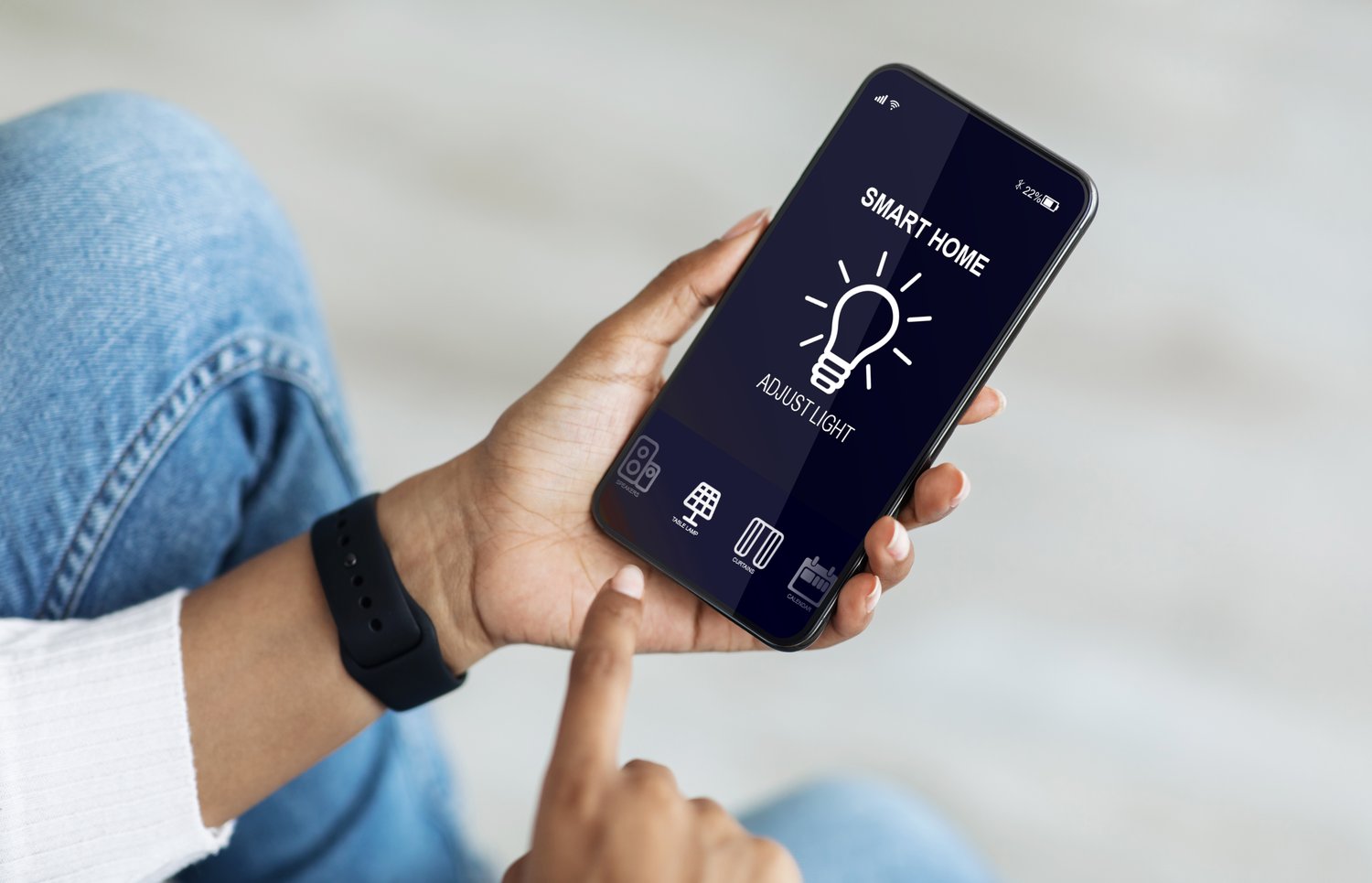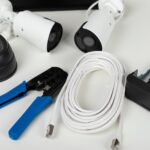Have you noticed your once-reliable smart light bulbs flickering offline more than they’d light up a room? This common frustration often points to underlying connectivity issues. As modern conveniences, smart light bulbs offer unparalleled control over your home’s ambiance and energy efficiency. Yet, when they start disconnecting, understanding the root cause becomes vital to restoring their seamless operation.
- Discover how simple adjustments to your Wi-Fi and router settings can stabilize your smart bulbs.
- Learn to identify and eliminate physical barriers that interfere with signal strength within your home.
- Understand the importance of configuring your smart bulbs correctly to maintain consistent connectivity.
- Stay ahead with firmware updates, a key tool in resolving persistent disconnection issues.
With these targeted insights, you’ll gain the tools needed to significantly reduce smart bulb connectivity issues, ensuring your smart home shines brilliantly once more. Let’s delve into the practical steps that will keep your lighting system in harmony with your technology.
Understanding Why Smart Light Bulbs Keep Disconnecting: Network Basics
When it comes to smart light bulb connectivity issues, the culprit is often the network. Understanding the fundamentals of Wi-Fi and Bluetooth connectivity is essential in resolving these problems effectively.
Wi-Fi Connectivity: Smart bulbs commonly rely on a home’s Wi-Fi network. If your network is unstable or slow, it can cause frequent disconnections. Issues such as interference from other devices, outdated equipment, or insufficient bandwidth can all impact performance.
Bluetooth Connectivity: While less common, some smart bulbs connect using Bluetooth. It’s important to recognize that Bluetooth has a more limited range compared to Wi-Fi, making proximity a significant factor in maintaining a stable connection.
To ensure your smart bulbs function seamlessly, it’s crucial to grasp these network basics and identify any potential network bottlenecks. Doing so will help in maintaining consistent and reliable smart bulb performance.
1.1 Troubleshooting Network and Router Issues
Network and router settings play a pivotal role in the connectivity of your smart light bulbs. To stabilize your network and ensure uninterrupted service, you should consider these practical troubleshooting tips.
Check Your Router’s Range and Position: Place your router in a central location, away from walls and obstructions. This ensures better coverage and reduces connectivity interruptions.
Optimize Network Settings: Access your router settings. Ensure that it supports dual-band for a broader range and less interference. Use a dedicated channel for your smart home devices to minimize traffic.
Firmware Updates: Routinely check and update your router’s firmware. These updates often contain patches for security and connectivity improvements.
By following these guidelines, you can address most network-related issues that disrupt smart bulb connectivity. A stable, well-optimized network is key to enjoying the full benefits of your smart lighting system.
Exploring Physical Barriers and Smart Light Bulbs: Fix Connectivity Issues
Smart light bulbs are a remarkable addition to any modern home, offering unparalleled convenience and energy management. However, physical barriers within your home may lead to connectivity issues that can disrupt their performance.
Understanding the impact of obstacles is essential in ensuring your smart bulbs function smoothly.
Common physical barriers include thick walls, large furniture, and metallic objects, which can significantly weaken the Wi-Fi or Bluetooth signals essential for smart bulb connectivity.
Water bodies, such as fish tanks, and other electronic devices can also interfere with signals. Identifying these barriers is the first step towards enhancing the performance of your smart bulbs.
To address and overcome these obstacles, you can take practical steps:
1. **Reposition Your Router**: Place your router in an open and central location to minimize interference. This can significantly improve the strength of the wireless signal throughout your home.
2. **Reduce Interference**: Keep Wi-Fi and Bluetooth-reliant devices, like cordless phones and microwaves, away from your smart bulbs and router. These devices can cause interruptions in signal transmission.
3. **Use Wi-Fi Extenders**: Consider using Wi-Fi extenders or repeaters to boost the signal, especially if your bulbs are located in distant areas like basements or attics.
By addressing physical barriers carefully, you can effectively enhance the connectivity and reliability of your smart lighting system.
Configuring Smart Bulbs Correctly to Avoid Disconnection Problems
Proper configuration of smart bulbs is vital to prevent disconnection problems that may occur over time.
For seamless smart bulb connectivity, initial setup combined with meticulous adjustments can make all the difference.
Start by ensuring compatibility. Check whether your smart bulbs are compatible with your network’s frequency. Many smart bulbs work only with a 2.4 GHz frequency, so confirm your router supports this setting.
Next, access the smart bulb’s application on your smartphone. Follow the app’s instructions meticulously to link your bulbs to the network. Most applications offer step-by-step guidance to ensure a smooth configuration process.
Assign static IP addresses to each bulb. This can prevent disconnection issues caused by the router’s DHCP settings, ensuring a stable connection at all times.
Rename your smart bulbs thoughtfully. Clear and distinct names help in organizing and controlling the bulbs through voice assistants or applications.
Look for grouping features within the app to manage multiple bulbs in a single room. This can prevent confusion and allow for efficient control.
By taking these steps, you ensure your smart bulbs are configured optimally. Addressing and fine-tuning these details will significantly improve connectivity, providing a reliable and efficient smart lighting experience in your home.
Smart Light Bulbs Firmware Updates: Fixing Connection Issues
Firmware updates play a critical role in ensuring the optimal performance of your smart light bulbs. Regular updates can resolve a variety of issues, including connectivity problems that cause your smart bulbs to disconnect unexpectedly.
Manufacturers release these updates to enhance the software that controls your smart bulbs. These enhancements often include improvements in connectivity, security patches to protect your devices from vulnerabilities, and new features that can improve both the functionality and user experience of your smart home setup.
To ensure your smart bulbs are operating efficiently, it’s essential to check for firmware updates regularly. Start by visiting the manufacturer’s official app, which typically offers an easy way to update your devices. Once in the app, navigate to the settings menu of your specific smart bulb model. Look for an option labeled “Update Firmware” or something similar.
Updating firmware is usually a straightforward process. Most updates can be initiated with a single tap followed by the app automatically downloading and installing the latest software version. Make sure your bulbs are connected to a stable Wi-Fi network during this process to avoid interruptions that could cause further connectivity issues.
If you encounter persistent problems even after updating the firmware, consider reaching out to the manufacturer’s customer support. They can provide specialized advice or notify you of known technical issues that may be affecting your particular model. Keeping your smart light bulbs’ firmware up to date can significantly reduce the chances of disconnection problems, ensuring a seamless smart home experience.
Frequently Asked Questions about Smart Light Bulb Connectivity
Why do my smart light bulbs keep disconnecting?
- Connectivity issues often arise from network instability, improper setup, or outdated firmware.
What can I do if my router is too far from my smart bulbs?
- Consider using a Wi-Fi range extender or moving the router closer to the bulbs.
How do I update the firmware of my smart light bulbs?
- Use the manufacturer’s app to check for and install available firmware updates.
Can physical barriers affect my smart bulb’s connection?
- Yes, thick walls and electronic devices can interfere with signals. Try repositioning bulbs or devices.
Is there a way to prevent frequent disconnections?
- Ensure your network is stable, configure bulbs correctly, and keep the firmware up to date.





